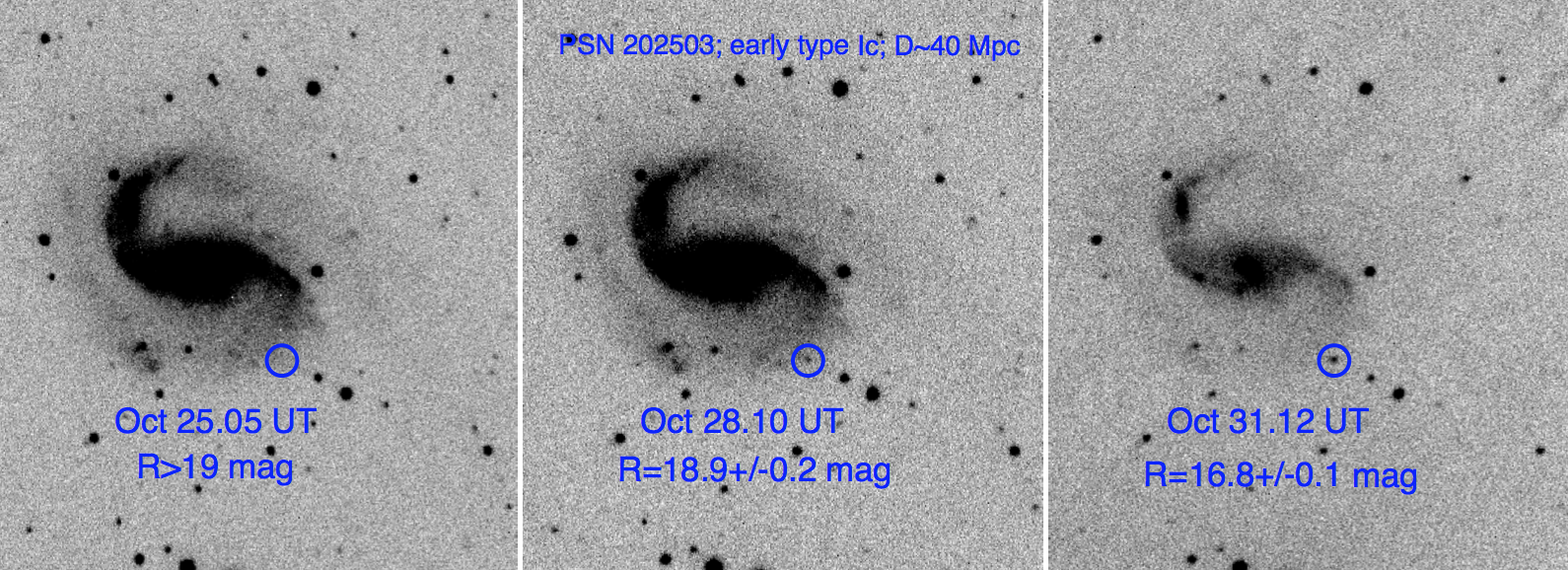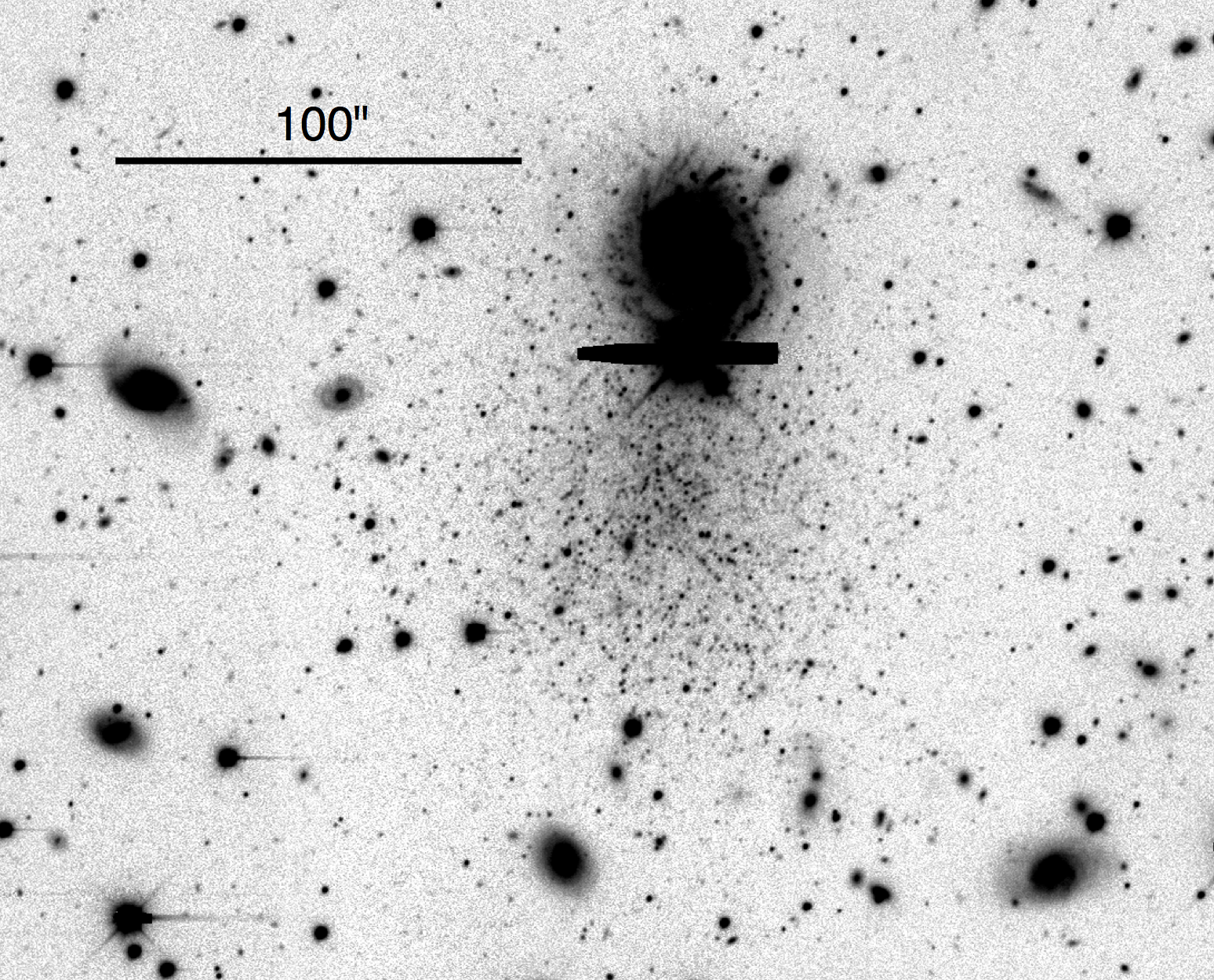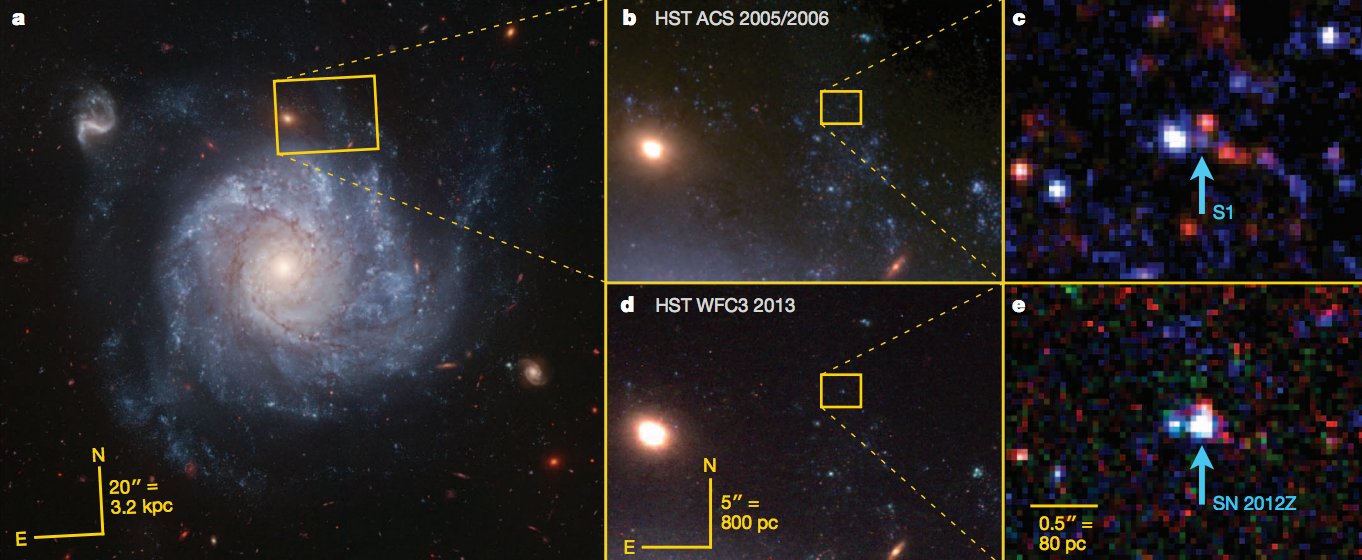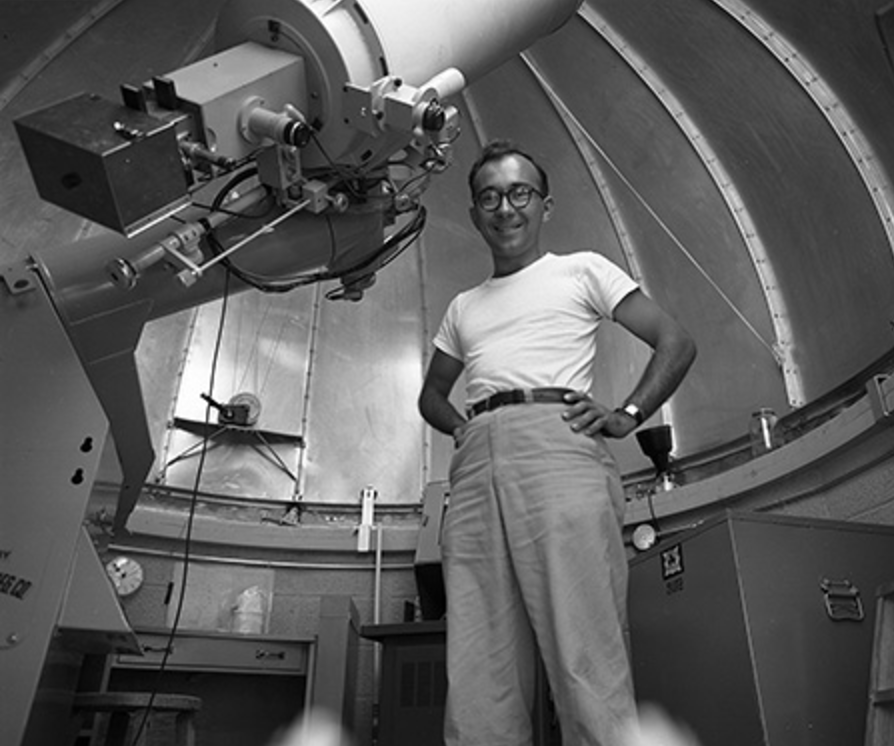I am an Astronomer studying transient phenomena associated with the death of massive stars as well as the thermonuclear explosion of white dwarfs. Recently, I have become quite keen to study supernovae discovered in the hours to days after exploding in order to directly constrain explosion paramters such as the radius of the progenitor star.
Dr Maximilian Stritzinger Astrophysicist, Aarhus Univsersity
Early phase studies of supernovae

What are the progenitors of different kinds of supernovae? How do these stars
explode? One of the best ways to gain insight into SN progenitors and their explosion physics is with early data in the hours to days after they explode. The early
emission from infant SNe is generally dominated by the explosion itself rather than radioactive decay
and can be used to measure the radius of the exploding star (Piro & Nakar 2013), a fundamental
property of the explosion. The early light curve can also measure properties of a companion star
(Kasen 2010), the presence of which is still an outstanding question for SNe Ia and thought to be
critical for generating many stripped-envelope SNe. The rise of the early light curve can measure
the outer 56Ni distribution (Piro 2012), an important constraint for explosion models. Furthermore,
observations on these timescales can even help us study entirely new classes of transients, including
the radioactively powered kilonovae that are expected from neutron star mergers (Metzger et al.
2010) and will be crucial for gravitational wave detections, and the shock breakout expected during
black hole formation (Piro 2013), the birth of which have never been observed.
Motivated by the early-time science opportunities described above, through the ASAS-SN project we have been discoverying and following young, nearby supernovae using a network of robotic telescopes. This line of research has led to a number of new discoveries. During 2017 our group co-authored two studies consisting of the earliest detections of Type Ia supernova. This includes Swift observations of SN 2017cbv obtained through Danish Swift time and published in Hosseinzadeh et al. (2017, ApJ, 845L, 11), and NUTS observations of a hybrid Type Ia supernova with an early flash triggered by a helium-shell detonation (Jiang et al. 2017, Nature, 550, 80).
In 2018 we published early phase observations of the type Ia SN 2012fr (Contreras et al. 2018) discovered within 24 hours of explosion, the Kepler K2 observations of ASASSN-18bt (Shappee et al. 2018), and published a study of the early-phase properties of the published sample of early observed Type Ia SN that reveals two distinct populations (Stritzinger et al. 2018c). Finally, in collaboration with PhD student S. Holmbo we published a detailed analysis on the early phase properties of the type Ia SN 2013gy which was discovered within 48 hours of explosion (Holmbo et al. 2019, A&A, 627, 174).
In early 2020 we published a detailed analysis of the type Ib SN LSQ13abf, which exhibits an early blue bump likely attributed to a period of shock cooling that occured prior to the turn on of emission powered by radioactivity (Stritzinger et al. 2020). The nature of this emission as well as the photospheric properties of this object suggest its progenitor had a zero-age-main-sequence mass in excess of 20 to 25 solar masses and perhaps a radius 100 times that of the Sun. Such a progenitor could originate either from a single star or from a binary star system.
Near Field Cosmology
 The Carnegie Supernova Project and the Carnegie Supernova Project II overall aim is to obtain the most precise Type Ia supernova distances possible as well as to obtain high-quality light curves and spectroscopy time-series of many varities of supernovae.
The CSP I obtained detailed light curves of 130 SN Ia with a sample mean redshift z=0.02 (Contreras et al. 2010, Stritzinger et al. 2011, Krisiciunas et al. 2017). Thereafter the CSP II obtained light curves and spectroscopy of ~250 SNe Ia with the first ever near-IR (NIR) sub-sample characterized by as sample mean redshift of z=0.06. These data sets will serve as a cornerstone to achieve SN Ia luminosities accurate to 1-2% out to significant cosmological distances.
On 10 December 2018 we have published final results of CSP I on the Hubble constant, consisting of the most accurate estimate yet obtained (Burns et al. 2018).
The Carnegie Supernova Project and the Carnegie Supernova Project II overall aim is to obtain the most precise Type Ia supernova distances possible as well as to obtain high-quality light curves and spectroscopy time-series of many varities of supernovae.
The CSP I obtained detailed light curves of 130 SN Ia with a sample mean redshift z=0.02 (Contreras et al. 2010, Stritzinger et al. 2011, Krisiciunas et al. 2017). Thereafter the CSP II obtained light curves and spectroscopy of ~250 SNe Ia with the first ever near-IR (NIR) sub-sample characterized by as sample mean redshift of z=0.06. These data sets will serve as a cornerstone to achieve SN Ia luminosities accurate to 1-2% out to significant cosmological distances.
On 10 December 2018 we have published final results of CSP I on the Hubble constant, consisting of the most accurate estimate yet obtained (Burns et al. 2018).
In 2019 I recieved a Villum Foundation experiment grant to conduct a pilot project aimed to study the local peculiar velocity field of the local universe with minimal observing resources.
We refer to this project as FLOWS and we are actively observing SNe Ia located on the entire celstial sphere.
The overall aim of this research is to identify the distribution in space of the major dark matter concentration driving our peculiar motion relative to that of the linear Hubble expansion. Ultimately, our work will reveal an expanded understanding of how dark matter clusters on small scales, and in doing so will also provide fundamental constraints for modern structure formation simulations.
type IaX supernovae
 Type IaX supernovae loosely resemble normal Type Ia supernovae though they have distinct differences. I have worked on a large number of Type IaX supernovae. For example, shown in the figure is the first candidate progenitor of a white dwarf system that produced the Type IaX supernova 2012Z. Details on the progenitor detection in pre-explosion HST images are presented in our paper in Nature (McCully et al. 2014, Nature, 512, 54), while comprehensive observations of supernova 2012Z are presented in a companion paper (Stritzinger et al. 2015, A&A, 573, 2), where I argue that at least some of their progenitors are Chandrasekhar-mass white dwarfs exploding via a pulsational delayed-deontation mechanism.
Type IaX supernovae loosely resemble normal Type Ia supernovae though they have distinct differences. I have worked on a large number of Type IaX supernovae. For example, shown in the figure is the first candidate progenitor of a white dwarf system that produced the Type IaX supernova 2012Z. Details on the progenitor detection in pre-explosion HST images are presented in our paper in Nature (McCully et al. 2014, Nature, 512, 54), while comprehensive observations of supernova 2012Z are presented in a companion paper (Stritzinger et al. 2015, A&A, 573, 2), where I argue that at least some of their progenitors are Chandrasekhar-mass white dwarfs exploding via a pulsational delayed-deontation mechanism.
Other individual SNe IaX I have worked on include: SN 2008ge (Foley et al. 2010, AJ, 140, 1321), SNe 2005hk, 2008ha and SN 2010ae (Stritzinger et al. 2014, A&A, 561, 146), SN 2014ck (Tomasella et al. 2016, MNRAS, 459, 1018), as well as an expanded sample of SNe IaX (Foley et al. 2013, ApJ, 767, 57)., and most recently, a detailed study of their host-galaxy properties (Lyman et al. 2018, MNRAS, 473, 1359), as well as the study of the low luminoisty type IaX SN 2019gsc (Tomasella, Stritzinger et al. 2020, in press).
type Ibc supernovae
 Picture on the left is entitled (by eso1231 - Photo Release) "A Blue Whirlpool in The River" and was made using images of NGC 1187 obtained by the VLT (+ FORS) as a part of my late phase followup program of the type Ib supernova 2007Y.
Picture on the left is entitled (by eso1231 - Photo Release) "A Blue Whirlpool in The River" and was made using images of NGC 1187 obtained by the VLT (+ FORS) as a part of my late phase followup program of the type Ib supernova 2007Y.
I have worked on stripped-envelope (SE) core-collapse supernovae (SNe) from the beginning of my career. This includes the detailed studies on SN 1999ex (Stritzinger et al. 2002, AJ, 124, 2100; including the first detection of shock break out), SN 2007Y (Stritzinger et al. 2009, ApJ, 696, 713), SN 2009bb (Pignata, Stritzinger et al. 2011, ApJ, 728, 14), and among others, a sample of 34 well-observed SE SNe followed by the Carnegie Supernova Project. To date we have published 3 of a series of 4 papers based on these data (Stritzinger et al. 2018a, A&A, 609, 134, Stritzinger et al. 2018b, A&A, 609, 135, Taddia, Stritzinger et al. 2018, A&A, 609, 136). Currently we are working on the corresponding visual-wavelength spectroscopic sample. In doing so we are using deep learning techniques to study the sample with the intent to devise a more robust way to spectroscopic classify SE SNe in future transient surveys (Holmbo et al., in prep.).
Spectrophotometric Standards
 In Stritzinger et al. (2005), PASP, 117, 810, we present CCD observations of 102 Landolt standard stars obtained with the Ritchey-Chrétien spectrograph on the CTIO 1.5-m telescope. Using stellar atmosphere models, we have extended the flux points to our six spectrophotometric secondary standards, in both the blue and the red, allowing us to produce flux-calibrated spectra that span a wavelength range from 3050 Å to 1.1 μm. Mean differences between UBVRI spectrophotometry computed using Bessell's standard passbands and Landolt's published photometry were determined to be 1% or less. Observers in both hemispheres will find this set of data useful for flux-calibrating spectra.
In addition these data serve as a powerful tool to characterize ones natural photometric system, necessary to transform natural system photometry to another user defined photometric system (S-correction), and ultimately, enables precise SNe Ia distances.
The atlas can be downloaded here: Download.
In Stritzinger et al. (2005), PASP, 117, 810, we present CCD observations of 102 Landolt standard stars obtained with the Ritchey-Chrétien spectrograph on the CTIO 1.5-m telescope. Using stellar atmosphere models, we have extended the flux points to our six spectrophotometric secondary standards, in both the blue and the red, allowing us to produce flux-calibrated spectra that span a wavelength range from 3050 Å to 1.1 μm. Mean differences between UBVRI spectrophotometry computed using Bessell's standard passbands and Landolt's published photometry were determined to be 1% or less. Observers in both hemispheres will find this set of data useful for flux-calibrating spectra.
In addition these data serve as a powerful tool to characterize ones natural photometric system, necessary to transform natural system photometry to another user defined photometric system (S-correction), and ultimately, enables precise SNe Ia distances.
The atlas can be downloaded here: Download.
Interacting supernovae
I have also worked in collaboration with Francesco Taddia on a number of interacting Type IIn supernovae. This includes a detailed study of the long-lasting SN 2005ip and SN 2006jd (Stritzinger et al. 2012, ApJ, 756, 173), an extended sample of SNe IIn observed by the CSP-I (Taddia et al. 2013, A&A, 555, 10), as well as on the interacting Type Ia+CSM SN 2008J (Taddia et al. 2012, A&A, 545L, 7). In collaboration with F. Taddia and T. Moriya we have recently published detailed studies of the type IIn SN 2013L (Taddia, Stritzinger et al. 2020) and SN 2014ab (Moriya, Stritzinger et al. 2020), respectively.
A couple objects of interest
The long-lasting Type IIn supernova 2006jd
The broad-line Type Ic supernova 2009bb